VIETNAM
November 23- December 11
My primary reasons for visiting Vietnam were to observe up close the rich cultural history of this fascinating country, savor unique culinary delights (except squid), experience the warm hospitality of the beautiful people and observe wonderful natural landscape along the way. OAT planning provided for all of these. No doubt as a teacher of history I also anticipated walking the sites associated with the war between American forces and Vietnam.
The cost of this tour was reasonable because there was no single supplement charge. I paid in full for a10% discount deal plus I received credit from my last GCT trip (Sicily). There was only a cost of $100 for add on transportation from Minneapolis instead of Los Angeles.
According to a website on travel in Vietnam this was a good time to visit the country. The information I garnered about the weather to be expected proved to be be pretty accurate.
Day 1. November 23rd, Tuesday: Overnight flight to Bangkok, Thailand
Departed MSP 1:10 am to Narota, Japan . 12 hours 40 minutes. Boeing 744. Arrived Japan 4:50 pm Departed 6:05 pm on DL 295; arrived 11:35 pm in Bangkok Thailand (Suvanabhum International Airport) after 7 hour thirty minutes flight.
Day 2, November 24th, Overnight flight to Bangkok. On board the Tokyo to Bangkok flight I met Ginny who had also signed up for the same OAT venture. She sat across the aisle from me and introduced herself. It turned out that we became good friends during the tour.
Outside customs we met our waiting OAT representative“Benny” who escorted us to our bus. She was very friendly and helpful in getting us settled down in Bangkok. She is dressed in white in the photo below.
The Grand China Hotel was very adequate and conveniently located in ChinaTown. Fresh orchids were placed around our room -- a nice touch.
Day 3, November 25th Bangkok/Hanoi, Vietnam
After a comprehensive buffet breakfast on the 10th floor of the hotel, we departed for the Bangkok airport for our flight to Hanoi. The terminal was quite modern, but in a prominent location was this traditional large 3-headed dragon.
Our group waited patiently at the gate before boarding a Vietnam Airlines jet to Hanoi.
The airplanes used by Vietnam Airlines were new and comfortable. Stewardesses were quite efficient and we were well cared for on the trip.
At the airport in Hanoi we were greeted by our very friendly and capable tour leader Nguyen Huu Quang whom we affectionately called Juan. We were very fortunate to have this knowledgeable
guide who took a genuine interest in our welfare. His humor set a pleasant tone for the entire trip.
Quang took us to our hotel in Hanoi, the Star View Hotel, situated in reach of some major historic sites.
We checked into our comfortable rooms and awaited our checked in luggage
Since we arrived in Hanoi at 1:30 pm, we had time for people watching. I stood at the entrance of the hotel and took photos of the immediate busy intersection. Motorbikes clogged the street
... and entrepreneurs plied their wares.
Then Quang came to the lobby area to organize a walking tour of the vicinity around the hotel. Shortly we approached the major gate of the Royal Citadel. Damage to the structure was evidence of shelling from the Red River during the French incursion.
Further along was the Cua Bac Church. The architect integrated the Catholic Church with some elements of the traditional architecture in Vietnam such as the system of roof tiles. For that reason, Cua Bac Church is considered a fine example for the mixed style between European and Vietnamese architectures. President George W. Bush visited here in 2006 for a joint Catholic and Protestant church service.
Ar 7:00 pm we were dropped off at the Banana Flower Restaurant for a Welcome Dinner.We had Banana Flower Salad,HaNoi Fried Spring Rolls, Grilled Skewer of Pork Fried Battered Chicken with Sweet & Sour Sauce, closing with Flambe Banana
Day 4 , November 26 Hanoi
After a comprehensive buffet breakfast on the top floor of our hotel, I waited in the lobby area for our next city tour. Again I had an opportunity to take photos at the intersection in front of the hotel. The bustling activity was interesting, as were the more casual subjects.
Finally at 8:30 am we boarded our bus and headed for the Cyclo Tour Center for our ride through historic Hanoi. We toured both Old Town and the French Section. After selecting our rick-shaw drivers we sat back ready to go. We started with the French Quarter which was reflected in its French influenced public parks, lake frontage sites and tree lined boulevards
One of the parks had a large monument to the founder of Hanoi. (photo taken from moving rickshaw)
From my rickshaw I continued to snap photos... the Thap Rus on the waterfront and an officer guarding a monuments.
Monument to the heroes who fought for independence from the French
Soon we entered the Old Town which reflected more of the every day work life of the people.
Evidence of the old guilds existed along the street.
The tour culminated at the stately Opera House. We reassembled at the bus for our next city adventure.
From the bus I admired the many tube houses which had been originally built very narrow to beat a tax system based on the width of buildings.
Our next objective was the Museum of Ethnology.
The tour started with observations of exhibits featuring the various ethnic groups. I concerned myself primarily with the Hmong peoples of the north because so many Hmong people had moved to Minneapolis and our church body does mission work among them.
The vast outdoor museum featured traditional water crafts like this racing junk. The tall building is a community house.
The fertility house had a number of carved images of a sexual nature so I had to be careful with my photography.
Next I took a shot of a burial moat.
Naturally I spent time with this Hmong house.
Because the grounds were so photogenic, many couples come here three weeks before their wedding for customary photo shoots. I enjoyed taking pictures.
Before leaving the museum, I took a picture of a painting of a Vietnamese woman who was strikingly beautiful.
For lunch we stopped at the Green Papaya and were greeted by this young lady who bid us welcome.
Lunch included seafood soup, spring rolls w/ dip, grilled beef w/ pepper sauce, grilled chicken w/ lemon leaves. grilled pork w/ pineapple, shrimp w/ tamarind and fried seasonal vegetables.
Our adventure continued to the Ho Chi Minh Mausoleum and the changing of the guard. When Ho Chi Minh died he requested that he be cremated and his ashes divided between the north, center and south. It seems a little ironic looking upon this Mausoleum because it is so grand and quite at odds with his wish.
To preserve his body the government consulted with the Russians who had preserved Lenin.
We walked to the nearby Presidential Palace.
Then to the Party Headquarters.
And then we continued walking (and walking) northward along the waterfront to the McCain Monument. See top of map.
The monument shows a falling pilot and an inscription beside it states that on October 26, 1967, John McCain was shot down here. Thirty-one other U.S. aircraft were also downed on this day. McCain was trying to bomb the nearby Yen Phu power plant when he was shot down by an antiaircraft gun crew defending the power plant. First photo: Vietnam War veteran “Wink” by the monument. In the next photo Quang talks about the monument.
Photo of McCain being pulled from Truc Bach Lake.
Nearing 3:30 pm. our driver took us over to the Water Puppet Show. In ancient Vietnam, the rural
Vietnamese believed that spirits controlled all aspect of their lives, from the kitchen to the rice paddies.
The Vietnamese devised water puppetry as a way to satisfy these spirits, and as a form of entertainment,
using what natural medium they could find in their environment. In ancient times, the ponds and flooded
rice paddies after harvest were the stage for these impromptu shows. The puppets are made out of wood
and then lacquered. The shows are performed in a waist-deep pool. A large rod supports the puppet
under the water and is used by the puppeteers, who are normally hidden behind a screen, to control them.
Thus the puppets appear to be moving over the water as in this photo I took during the performance.
Quang had reserved nice up-front seats that made photography easy.
Theatre musicians.
Puppets I managed to photograph during the performance.
Puppet movers take a bow after the show.
Then at 6:30 pm we had dinner at the Viet Kitchen Spring Restaurant.
Day 5, November 27th
Explore Hanoi/Optional
Tho Ha Village tour
I signed up for an optional tour of Tho Ha Village, twenty miles north of Hanoi. We met in the lobby at 8 am. On our bus journey we made a stop at a cemetery. A family was there at the same area of our visit and they burned incense at a cemetery plot of a loved one.
Quang pointed out tombstones across the roadway that had been placed in the rice field where the deceased had worked
Quang explained that there are two burials after death in this society. The initial one is for the duration of 3 years of mourning. The 2nd burial (permanent) is followed by a party. This is a tradition in the north; in the south there is only 1 burial.
Nearby a worker was preparing a burial site.
From here we walked over to the military cemetery.
We visited the nearby Ho Chi Minh Memorial where incense is burned by those who wish to show respect.
Continuing on this main highway 1, we saw large logs of teak wood. Even though space was not as limited as in Hanoi, there were still tube houses being constructed.
Quang announced that a procession was in place along the roadway ahead. I took shots through the front window of these men who were following the remains of a deceased to the 2nd burial site. Those wearing white head bands did so as a sign of mourning.
We had another Discovery Moment when we pulled over at a tile factory for a happy stop. A huge pile of clay was soften with water and then sliced into workable blocks
These globs of clay were pressed into a tile shaped mold and excess clay was sliced away,
The tile shaped product was laid out on the ground for future firing in a kiln.
Note the smoke from the kiln on the far eight.
The finished tiles were then stacked for future use.
Back on the bus we checked the map to see where we were headed. Actually, the village was too small to merit a spot of the map.
Finally we reached the Nhu Nguyet River that surrounded Tho Ha traditional village. We had to wait until a ferry would take us to the other side.
On the other side of the river, we watched young men mold coal balls used as a slow burning heating fuel. Next to this was the local pagoda.
We walked through the Old City Gate and then through a narrow alley way with bamboo strips
used for making rice paper.
Once we reached the paper-making site, a number of our people sat down with the rice paper making apparatus and proved to be up to the task of making a finished product.
From here we were led to the village chief who took us into his home for a refreshing drink of wine.
The village leader loved to sing and play his guitar. Others joined in by either playing an instrument or singing along.
At the conclusion of our social hour we headed back toward the landing area. As we waited for the ferryboat, some local school children wanted to visit with our members.
When we returned to Hanoi we had dinner at the 69 Bar Restaurant.
Since this was a narrow tube building we had to climb up and down a narrow stairway.
We had a very nice meal which included fried wanton dumpling, “Bun Cha” Hanoi and lemongrass fish skewers.
After dinner we headed back to our hotel, but those who wished to visit the “Hanoi Hilton” were dropped off there and they could walk back. This site was where John McCain was incarcerated during the Vietnam war.
Day 6 , November 28th
Overland to Halong Bay &
Overnight Junk Cruise Halong Bay
After breakfast I went to the lobby area of the hotel to snap pictures of the action at the corner junction. There were the ubiquitous T shirt vendors waiting for us American tourists.
Cyclists lined up at the traffic signal. An elderly woman consented to having her photo taken.
At 8:30 am we departed in our bus for the scenic ride along Hwy 5 to Halong Bay.
Which included a toll stop and then a happy stop at Hong Ngoc where we could observe disabled
people making pieces of art.
Finally we reached Halong Bay —the Emerald Bay of Vietnam. Soon after we boarded our junk, a
wooden sailboat in the traditional Vietnamese style.
We settled down for a nice shrimp dinner.
And then we soaked in the bay dotted with 3,000 islands arising from the sea.
We had the whole ship to ourselves.
In the evening we could see the glimmering lights of other ships anchored out among the islands.
Then we retired to our “staterooms.”
Day 7, November 29th
Cruise Halong Bay &
Visit Museum of Ethnology
Fly to Hué
After breakfast on the junk, we disembarked for the trip back to Hanoi via Hwy 5. Our lunch break at 12:30 pm was at Al Fresco Restaurant.
After a satisfying lunch, we stepped outside to the busy world of motorbikes. Young children, even
babies, wore no head protection devices.
Locals smoked from long bamboo pipes.
Diagonally across the street was St. Joseph’s Cathedral. The church was built in 1886 in the neo-Gothic style. It holds several masses throughout the day and is usually crowded on weekends and religious holidays. We went inside and I was able to take a photo of one of the stained glass windows.
Outside the church these three young girls posed for me.
Next on the agenda was a tour of the Temple of Literature, which was reallya Temple of Confucius,
founded in 1070.
When it served as a university, a tradition was established of carving the names of the laureates of the
university on stone steles that were placed on top of stone turtles.
Three of the grounds workers were chatting among themselves until a supervisor interrupted their conversation.
As in other public parks and temple areas, future brides posed for pictures.
The main objective of the tour was visiting the shrine to Confucius. On each side of the altar area were statues of the key disciples of Confucius.
Many visitors to the site burned incense in respect to Confucius.
Before leaving, we took photo shots in this historic setting.
GO ON TO 2010 VIETNAM PART II: THE MIDDLE COUNTRY
Appendix (History summary)
Western influence had begun in the 16th century with the arrival of European traders and Roman Catholic missionaries. The Dai Viet rulers eventually felt threatened, and persecuted the missionaries in the 17th and 18th centuries. Seeking to protect the missionaries and to become a power in the area, French forces entered Vietnam in 1858, taking control of the country by 1883. Vietnam became part of French Indochina, and remained under French domination until 1940, when Germany occupied France during World War II and Germany’s ally Japan took control of Vietnam.
After Japan’s defeat, in September 1945, the communist Viet Minh led by Ho Chi Minh gained control of many regions of the country. Ho Chi Minh declared Vietnam an independent nation—the Democratic Republic of Vietnam. France then re-asserted its claim on the region, and French forces regained control in the south. However, resistance from the Viet Minh continued, and the Communists controlled the north. By late 1946, the Indochina War was in full progress, continuing until 1954, when the French were defeated at Dien Bien Phu.
In 1954, delegates to an international conference in Geneva agreed to a temporary division of Vietnam into two separate countries—North and South Vietnam at the 17th parallel. In this temporarily separated period, Ho Chi Minh would continue to lead in the North, and Bao Dai was to head the south. There was to later be an election to determine the new leader of a reunited Vietnam. However, Ngo Dinh Diem, the Prime Minister of the State of Vietnam overthrew the government in the south (with the backing of the United States), took over as leader, and refused to schedule the planned election.
By 1957, the Viet Minh in the south, now called the Viet Cong, had begun an armed revolt against Diem’s government, supported by North Vietnam. More countries were drawn in as the fighting continued, including the U.S., which became deeply embroiled in the conflict by the late 1960s. The U.S.S.R. and China supported North Vietnam. In South Vietnam, a series of coups eventually brought army general Nguyen Van Thieu to power; he was then elected president in 1967. In North Vietnam, the Communist Party Politburo took over following Ho Chi Minh’s death in 1969.
The war ended in 1975 with the withdrawal of American troops. In 1976, the country was unified under the Communists as the Socialist Republic of Vietnam, and Saigon was renamed Ho Chi Minh City. More than three million Vietnamese had been killed in the decades of war, and the country’s economy had been devastated. Many Vietnamese emigrated to the U.S. and other countries. In 1978, Vietnam severed its ties with China and aligned itself more closely with the Soviet Union. That same year, Vietnam drew China’s wrath by invading Cambodia, an incursion that lasted into the 1980s. Under the leadership of Nguyen Van Linh, the mid- to late-1980s was a period of major economic and policy change in Vietnam. In response to the disintegration of the Soviet Union and the loss of its economic support, Vietnam began to liberalize its trade policies, allow private enterprise, and encourage foreign trade.
From 1990 to 1997, Vietnam’s economy grew rapidly. In 1994, the U.S. lifted its trade embargo, and in 1995, full diplomatic relations were restored. That same year, Vietnam was accepted into the Association of Southeast Asian Nations (ASEAN). A bilateral trade agreement between the U.S. and Vietnam was signed in July 2000.
Today, Vietnam continues to have one of the fastest growing economies in the world.




























































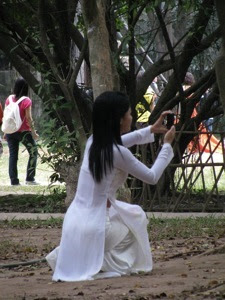























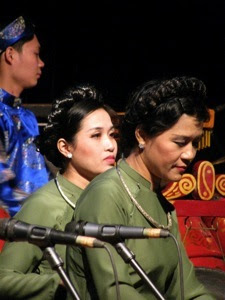























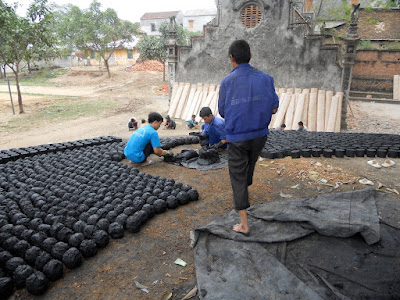










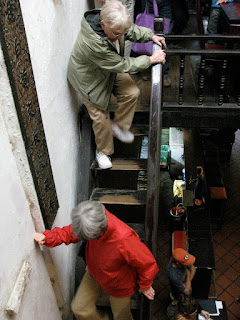













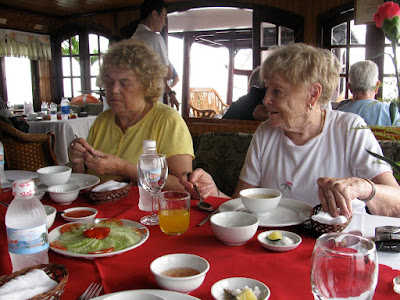

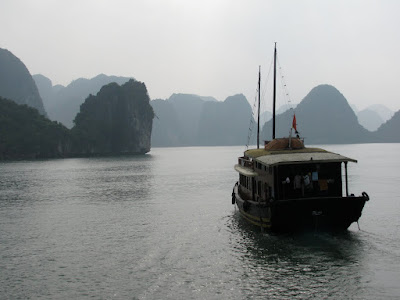



























No comments:
Post a Comment